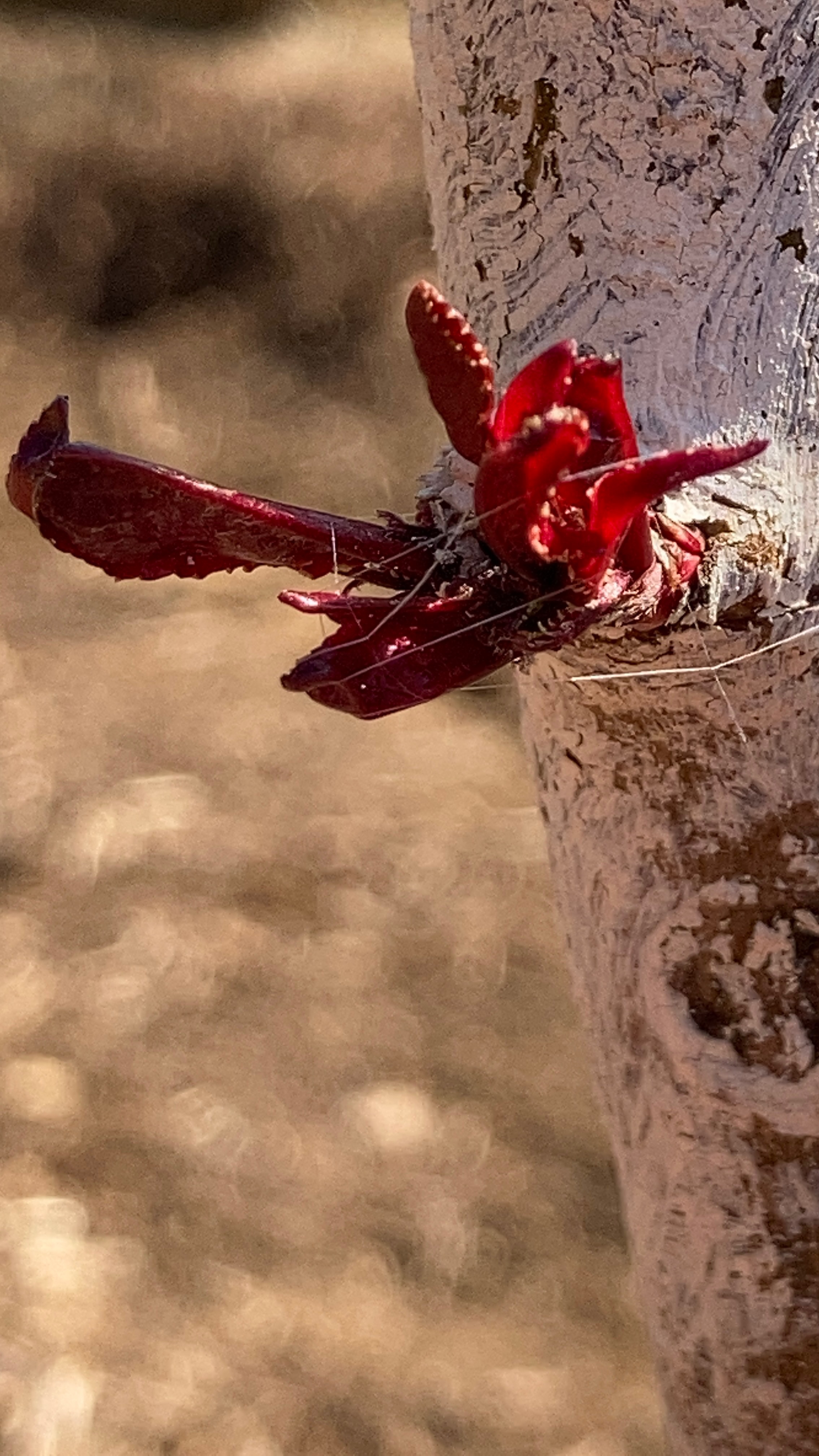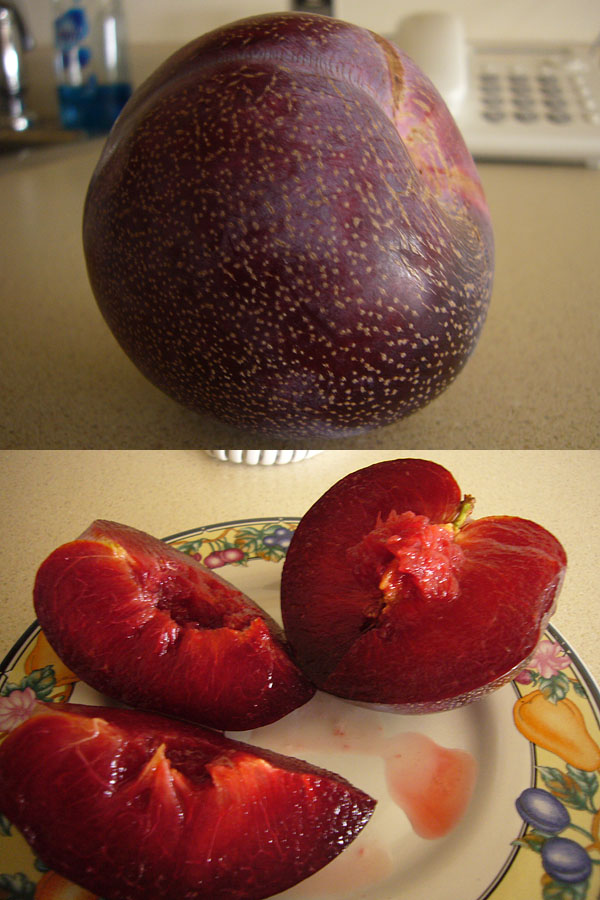|
Nectaplum
A nectaplum (interspecific nectarine) is a tradename for varieties that are a hybrid of nectarines and plums developed by Floyd Zaiger. Both nectarine and plum traits are easily detectable. It sprouts from an ornamental tree which makes it popular for home gardening, but is not large in the commercial market. The fruit's exterior has smooth skin closely resembling a nectarine. Nectaplums are noted for their sweetness (due to a very high sugar content) and their intense flavor. Varieties There is currently only one marketed variety of this type of fruit. *Spice Zee - Slightly acidic, loaded with sugar. White flesh, and reddish-grey skin. Harvests in middle to late July. See also * Peacotum * Plumcot, Apriplum, Pluot, or Aprium References Edible fruits Hybrid prunus {{Fruit-stub ... [...More Info...] [...Related Items...] OR: [Wikipedia] [Google] [Baidu] |
Peacotum
A peacotum is a peach/apricot/plum hybrid (biology), hybrid developed by Zaiger's Genetics, Zaiger's Genetics, Inc., a company that develops novel fruit through hybridization. Peacotum is trademarked by Dave Wilson Nursery, Dave Wilson Nursery Inc. An application to trademark the name nectacotum in the United States for varieties derived from nectarine-type peaches was made in 2004 but later abandoned. See also *Nectaplum *Pluot References Hybrid prunus {{Fruit-stub ... [...More Info...] [...Related Items...] OR: [Wikipedia] [Google] [Baidu] |
Plumcot, Apriplum, Pluot, Or Aprium
Pluots, apriums, apriplums, plumcots, plumpicots, or pluclots are some of the hybrids between different ''Prunus'' species that are also called interspecific plums. Whereas plumcots and apriplums are first-generation hybrids between a plum parent ('' P. salicina'') and an apricot (''P. armeniaca''), pluots and apriums are later-generations. Both names "plumcot" and "apriplum" have been used for trees derived from a plum seed parent, and are therefore equivalent. Plumcots and apriplums Natural plumcots (also called apriplums) have been known for hundreds of years from regions of the world that grow both plums and apricots from seed. The name ''plumcot'' was coined by Luther Burbank. The plumcot (apriplum) tree is propagated asexually, primarily by grafting or budding. Pluots Pluots are later generations of complex hybrid between the Japanese plum, ''Prunus salicina'' (providing the greater amount of parentage), and the apricot, ''Prunus armeniaca''. The fruit's exterior has smoo ... [...More Info...] [...Related Items...] OR: [Wikipedia] [Google] [Baidu] |
Nectarines
The peach (''Prunus persica'') is a deciduous tree first domesticated and Agriculture, cultivated in China. It bears edible juicy fruits with various characteristics, most called peaches and the glossy-skinned, non-fuzzy varieties called nectarines. Peaches and #Nectarines, nectarines are the same species, though they are regarded commercially as different fruits. The tree is regarded as handsome and is planted in gardens for its springtime blooms in addition to fruit production. The peach tree is relatively short lived, usually not exceeding twenty years of age. However, the peach fruit is regarded as a symbol of longevity in several East Asian cultures. The specific name ''persica'' refers to its widespread cultivation in Persia (modern-day Iran), from where it was transplanted to Europe and in the 16th century to the Americas. It belongs to the genus ''Prunus'', which also includes the cherry, apricot, almond, and plum, and which is part of the Rosaceae, rose family. The p ... [...More Info...] [...Related Items...] OR: [Wikipedia] [Google] [Baidu] |
Plums
A plum is a fruit of some species in ''Prunus'' subg. ''Prunus''''.'' Dried plums are often called prunes, though in the United States they may be labeled as 'dried plums', especially during the 21st century. Plums are likely to have been one of the first fruits domesticated by humans, with origins in East European and Caucasian mountains and China. They were brought to Britain from Asia, and their cultivation has been documented in Andalusia, southern Spain. Plums are a diverse group of species, with trees reaching a height of when pruned. The fruit is a drupe, with a firm and juicy flesh. China is the largest producer of plums, followed by Romania and Serbia. Japanese or Chinese plums dominate the fresh fruit market, while European plums are also common in some regions. Plums can be eaten fresh, dried to make prunes, used in jams, or fermented into wine and distilled into brandy. Plum kernels contain cyanogenic glycosides, but the oil made from them is not commerci ... [...More Info...] [...Related Items...] OR: [Wikipedia] [Google] [Baidu] |
Floyd Zaiger
Chris "Floyd" Zaiger (April 26, 1926 – June 2, 2020) was an American fruit breeder particularly known for hybrid development of stone fruit and numerous plant patents. Zaiger founded Zaiger's Genetics, a fruit-breeding business in Modesto, California, which is now an international business selling cultivars and hybrids. Zaiger developed varieties such as the pluot, and has been called "the most prolific stone fruit breeder in the modern era." Early life and education Chris Floyd Zaiger was born to Christian Fredrick Zaiger and Anna Marie Zaiger on April 26, 1926, in Kennard, Nebraska. The family moved to Iowa and then Oregon, before coming to California's San Joaquin Valley. He attended school until eighth grade and worked as a migrant strawberry picker. During World War II, he was drafted into the U.S. Army where he served as a paratrooper in the 11th Airborne Division. Zaiger earned a degree in plant pathology and agricultural education in 1952 from the University of Cali ... [...More Info...] [...Related Items...] OR: [Wikipedia] [Google] [Baidu] |
Edible Fruits
An edible item is any item that is safe for humans to eat. "Edible" is differentiated from "palatability, eatable" because it does not indicate how an item tastes, only whether it is fit to be eaten. Nonpoisonous items found in nature – such as some edible mushroom, mushrooms, insects as food, insects, edible seaweed, seaweed, and so forth – are referred to as edible. Processed items that normally are not ingested but are specially manufactured to be so, like edible underwear or edible packaging, are also labeled as edible. Edible items in nature Humans eat thousands of plant species; there may be as many as 75,000 edible species of angiosperms, of which perhaps 7,000 are often eaten. Edible plants found in nature include List of edible flowers, flowers, List of edible seeds, seeds, berry, berries, edible seaweed, seaweed, and List of edible cacti, cacti. Being able to identify the versions of these plants that are safe to eat is an important survival skills, survival skill. ... [...More Info...] [...Related Items...] OR: [Wikipedia] [Google] [Baidu] |




